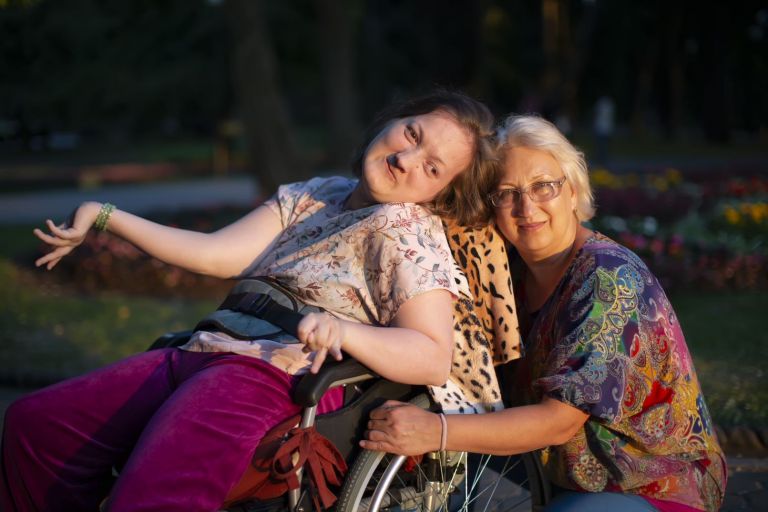How are people with disability experiencing government services?
We asked people with disability in NSW about their experiences interacting with different government services, including how easy they found their interaction with the service, how satisfied they were with their service experience, and to what extent they trusted the service to be working in their best interests.
Here's what people with disability told us
of people with disability find it easy to interact with NSW Government services.
of people with disability are satisfied with their experience with NSW Government services.
of people with disability trust NSW Government services are working in their best interests.
About people with disability in NSW
Around 1 in 5 people in NSW live with a disability.1 Our services need to be accessible to everyone to ensure people with disability can thrive and fulfil their potential.
There are
people in NSW who need assistance with core activities, representing 6% of the state's population.2
are studying, including those in secondary school, or those in vocational education, for example, TAFE or university.2
Around
are either married or in a de facto relationship.2
How well are we delivering on our Customer Commitments to people with disability?
The NSW Customer Commitments are our promise to customers on what to expect when interacting with our services. These commitments help us to put customers at the heart of our services and everything we do.
There are 6 Commitments that our services seek to deliver on for customers: easy to access, act with empathy, respect my time, explain what to expect, resolve the situation, and engage the community.
Here’s what people with disability told us based on their experience
- Easy to access
- Act with empathy
- Respect my time
- Explain what to expect
- Resolve the situation
- Engage the community
77% of those surveyed that have a disability found government services easy to access.
74% of those surveyed that have a disability agreed that services delivered on our commitment to act with empathy.
71% of those surveyed that have a disability agreed that their time was respected throughout their service experience.
70% of those surveyed that have a disability agreed that services explained what to expect.
78% of those surveyed that have a disability agreed that their situation was resolved.
52% of those surveyed that have a disability agreed that government is engaging with customers to ask for feedback and how they want services to be delivered.
Case study
Image

Enabling greater independence for customers with disability
The Taxi Transport Subsidy Scheme makes it easier for customers with disability to get around and go about their daily lives.
Image

Supporting customers who prefer a quieter environment
Service NSW is trialling Quiet Hour in select service centres to make it easier for customers who have trouble with sensory regulation or prefer a quieter environment.
Find out more about the report
Sources:
1 Australian Bureau of Statistics (ABS): 2018 Survey of Disability, Ageing and Carers. Persons: Any limitation, restriction or impairment which restricts everyday activities and has lasted, or is likely to last, for at least six months – New South Wales.
2 Australian Bureau of Statistics (ABS): 2021 Census of Population and Housing. Persons: Need assistance with the core activities of self-care, body movement, or communication – New South Wales.
CXS Source: NSW Government Customer Experience Survey (CXS). About the survey methodology.
Fieldwork: January to June 2022.
Questions: Thinking about your experience with the government service…
- How easy or difficult was it to do this?
- How satisfied or dissatisfied were you with this experience?
- To what extent do you trust the government service to be working in your best interests?
- We would like your opinion on [CUSTOMER COMMITMENT]. Please indicate how strongly you agree or disagree with each of the statements below.
Base: Those with long-standing conditions (i.e. deafness or severe hearing impairments, blindness or partial sight, long-standing physical conditions, or learning disabilities) who have interacted with government services in the last 12 months.
Sample sizes: Ease and Satisfaction (n=2146), Trust (n=2179), Customer Commitments (various n=1594 to 2179).
Definitions and notes:
- Ease of service is calculated as the percentage of customers that selected ‘Very easy’ or ‘Somewhat easy’.
- Satisfaction with service is calculated as the percentage of customers that selected ‘Very satisfied’ or ‘Somewhat satisfied’.
- Trust in service is calculated as the percentage of customers that selected ‘Trust a great deal’ or ‘Somewhat trust’.
- Responses to the Customer Commitment questions are calculated as the percentage of customers that selected ‘Strongly agree’ or ‘Somewhat agree’ and it excludes ‘Not applicable’ responses.
- The NSW Government Customer Experience Survey (CXS) captures feedback from people who have any of the following long-standing conditions: deafness or severe hearing impairments, blindness or partial sight, long-standing physical conditions, or learning disabilities. The survey is conducted online and as such may not provide a full representation of people with disability.






